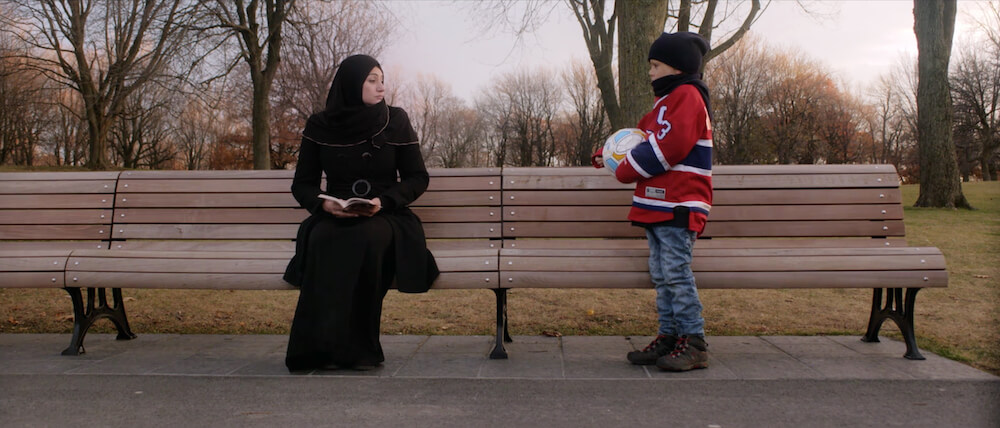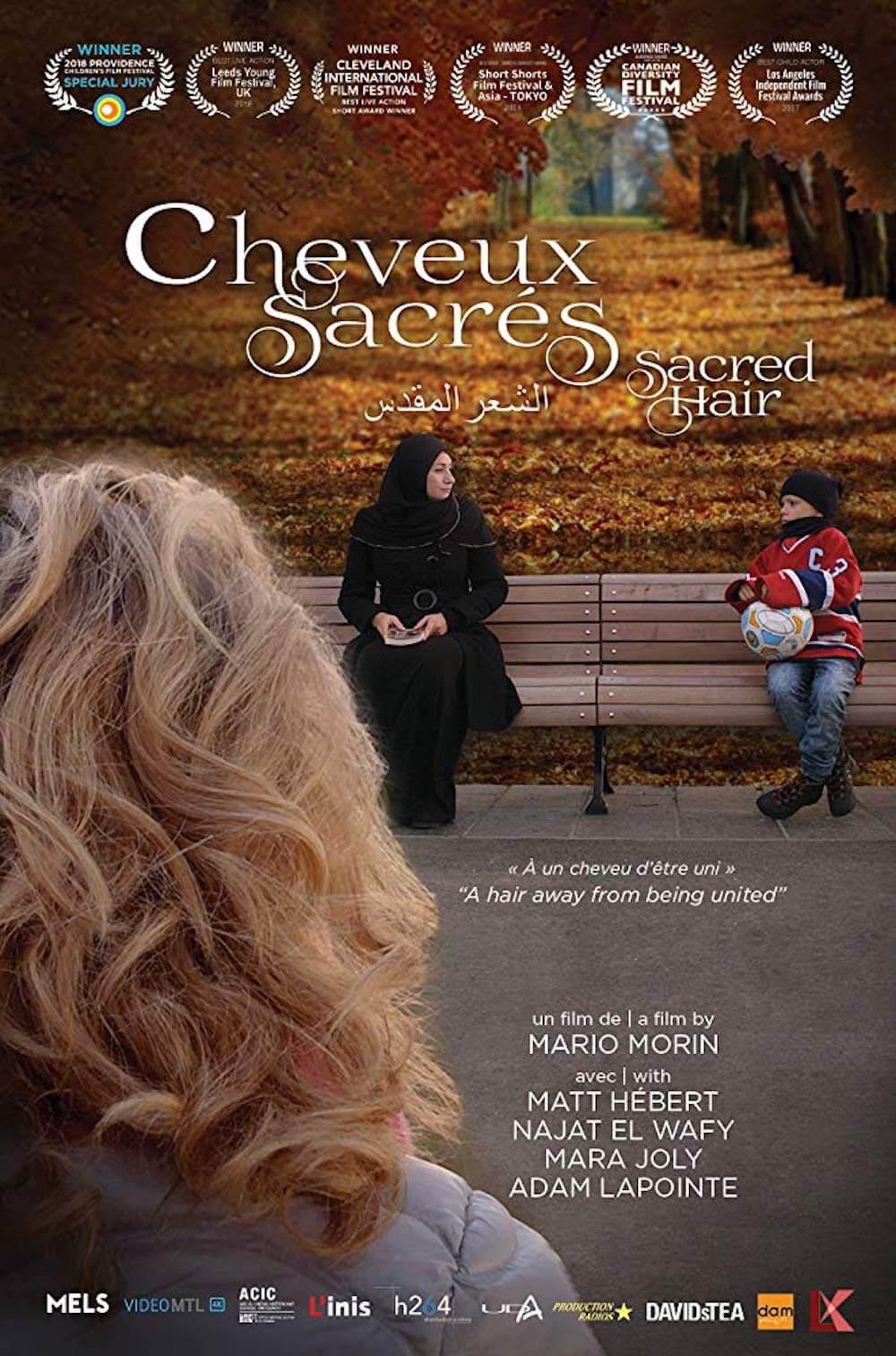Praise Be…for ‘Sacred Hair’

A boy has a chance encounter with a young woman from a different culture than his, but the two learn that they share a common bond: their hair and the sacred nature culture and society places upon it. Cheveux Sacres (Sacred Hair) shows us underlying, universal issues set against the quiet urban backdrop of Montreal.
The film was awarded Best Live Action Short Film at the 2018 Cleveland International Film Festival, was an official selection of the 2018 Edmonton International Film Festival and was the winner for Best Child Actor (Matt Hébert) at the 2017 Los Angeles Independent Film Festival Awards. Frontrunner interviewed director Mario Morin to find out more.
What inspired this story?
Actually, there was a lot of talk in the media about reasonable accommodation of other religions and secularism in Canada prior to the discussion on the prohibition of religious symbols. Talk mostly surrounded the hijab and niqab, and I felt the media were making a major case about it. I decided to use that theme and symbol to talk about difference. I wanted to give some perspective and context to the expression of different cultures in our societies by using a religion that the majority seem currently inclined to ostracize. The hijab was an excuse to tell a story about how we judge others without really knowing them and how we make assumptions so easily.

Cheveux Sacres (Sacred Hair) (2018)
Dir. Mario Morin
Why do you think hair has such symbolism connected to it?
Because hair is part of how we express ourselves, it’s a big part of our identity. It’s an object of desire and beauty. Living in a world where the sense of sight has taken over all other senses, we can be compulsive in judging and classifying people according to their appearance. It’s another means by which we judge each other. On some level, Arthur was drawn to Mounia because unconsciously he was trying to stop being alone and isolated, and rediscover a sense of belonging to a group. He’s curious to know if under the hijab, she has hair. Then he could feel not so different and be reassured. Adversity is the common ground and the real point of connection that operates between Arthur and Mounia and they each experience it via some aspect of their hair.
What was it like working with the child actors?
When I picked Matt Hébert to play Arthur, I sensed he was strong enough to learn the voluminous amount of text and have the professionalism to work well on set. I was right. Matt responded very well to the demanding two-day shoot. He had to get up at 4 am to get ready and was amazingly collaborative. He said he liked working with me because he felt treated like an equal. I basically focused on inspiring confidence in him and made sure we had fun, while still working seriously. I was extremely specific with what I wanted and Matt delivered with aplomb. I have to say that I love working with children. Their disarming authenticity helps me be a better person and bring the craft of storytelling to a whole other level, I think.
The scene where Mounia shows her hair; can you expand on why you included that scene?
The reason I made Mounia take off her hijab, a very important part of her identity, to reveal her hair, was to show that beyond religious beliefs, there is a person, a human being with their own set of challenges and capacity to make individual choices. I wanted to show that any beliefs can be good, and that as long as we’re not blindly faithful to them, all relationships are possible, even across opposing beliefs. Mounia takes a chance and removes her hijab to show Arthur that even though he has no hair, which makes him subject to ridicule, Mounia is no different with her full head of hair. She knows that her act will help young Arthur to accept himself the way he is. I believe everyone wants and has the capacity to be kind, giving and supportive towards others. And by acknowledging and attempting to ease another person’s suffering, we connect more firmly with our own humanity and self-acceptance.
A running joke throughout the story is the rivalry between two local sports teams: Mount Royal and Montreal; seriously, though, what is the main difference?
The first European to scale the mountain was Jacques Cartier, guided there in 1535 by the people of the village of Hochelaga. They named this mountain Mount Royal. One theory is that the name of the Island of Montréal derives from Mont Réal, as the mountain’s name was spelled in Middle French (Mont Royal in modern French). So Mount Royal is the mountain, where one of the city’s big parks is located, and Montreal is the name of the city.

Tell us about your future projects.
I’m aiming to shoot another short film next July; with a style, theme and treatment completely opposed to that of Sacred Hair. The scenario will be taken from the adaptation of a short story, the source of which I can’t yet mention. In parallel, I’m developing a feature film and several other projects. I’m meeting with producers and setting the foundations for the next phase, which holds a lot of promise. I consider myself privileged by the unexpected success of Sacred Hair and, of course, I plan to take advantage of any doors that this first film open up for me.